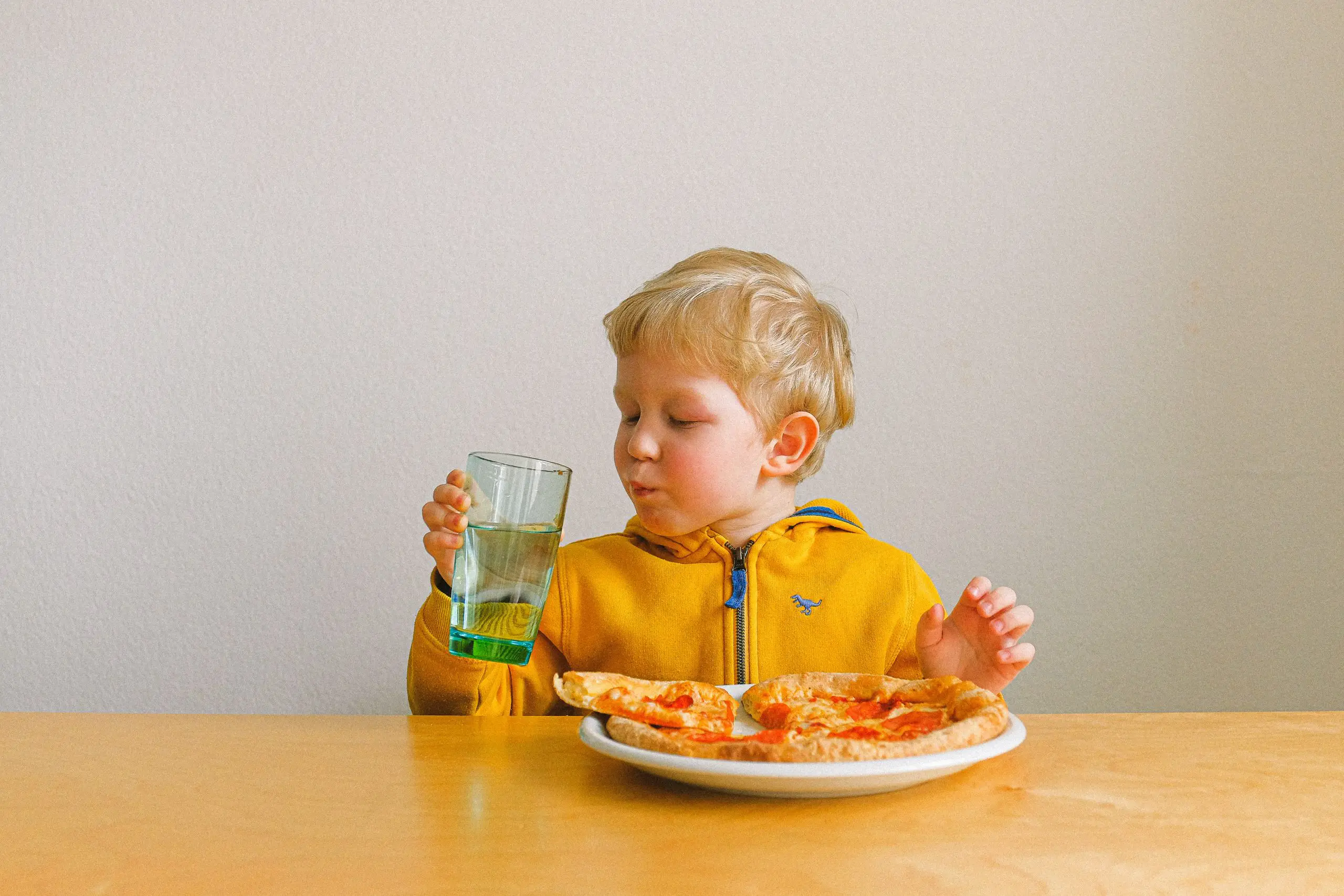Food safety for kids should be a top priority in any home. It is important to keep in mind that there are several things you need to do to make sure that your child doesn’t ingest anything harmful. This includes taking precautions when it comes to cooking with raw meats and making sure that the foods that they eat are cooked at a safe internal temperature.
Additionally, it would help if you also ensured that you clean up your kitchen after cooking so that your kids aren’t exposed to the mess they might have made.
Keeping surfaces clean can help minimize the spread of infectious diseases. Typically, sanitizing is recommended for food-contact surfaces, but it’s also important to maintain the cleanliness of inanimate objects, such as toys. It’s also a good idea to use the right cleaning products on these surfaces and to keep them disinfected.

What is Food Safety?
Food safety refers to the steps taken to ensure that our food is healthy for human consumption and free of dangerous pollutants. This covers a wide range of activities, including preparing and cooking food in homes and restaurants and handling and storing food during its production and distribution.
Food safety procedures are intended to reduce the risk of Exposure to dangerous chemicals and contaminants and to stop the growth of hazardous bacteria, viruses, and parasites that can cause foodborne illness. Typical methods for ensuring food safety include:
Good hygiene practices include washing hands before handling food and minimizing cross-contamination between raw and cooked meals are part of proper food handling.
Proper food storage is keeping food at the right temperature to stop germs and other hazardous microorganisms from growing.
To kill any potentially harmful bacteria, food must be cooked to a safe internal temperature, which includes cooking meat, poultry, and eggs.
Avoid eating raw or undercooked food because some foods, like raw eggs or undercooked meat, may contain dangerous bacteria that can lead to food poisoning.
Keeping track of food recalls Exposure to dangerous toxins can be avoided by being informed about food recalls and avoiding using recalled products.
Maintaining personal and communal health and well-being requires adherence to food safety procedures. We may lessen the chance of contracting a foodborne disease and take advantage of the many advantages of a healthy, balanced diet by ensuring our food is free of dangerous toxins.
Food Safety for Kids
Here are some recommendations regarding kids’ food safety:
- Hand washing To stop the transmission of germs, teach kids to wash their hands before handling or eating food.
- Stay away from contamination: To prevent foodborne diseases, teach children to keep raw meats away from items ready to consume.
- Teach children to use a food thermometer to monitor the internal temperature of cooked meats to ensure that hazardous bacteria are eliminated.
- Proper food storage requires teaching children to put food in the freezer or refrigerator as soon as possible to avoid deterioration and foodborne illness.
- Food allergies: Inform children about their allergies and how to avoid foods that can trigger an allergic reaction.
- Educate children on the signs of food poisoning and how to report them. If a child suffers symptoms like vomiting, diarrhea, or stomach cramps after eating, they should tell a responsible adult and get medical help.
- Remember, encouraging healthy eating habits and preventing foodborne illness both benefit from teaching children about food safety.
Why is it Necessary to Teach Kids About Food Safety?
- Health: Foodborne infections, particularly in young children and those with compromised immune systems, can result in major health issues. Children can learn to avoid foodborne illnesses and maintain excellent health by being taught about food safety. For several reasons, it is crucial to teach kids about food safety:
- As children get older, they will be in charge of making their own food decisions and preparing it. Early instruction in food safety lays the groundwork for lifelong healthy eating habits and safe food handling procedures.
- Prevention: Educating children about the risks of food contamination and how to avoid it decreases the likelihood of contracting a foodborne disease at home or in the neighborhood.
- Kids taught about food safety are more conscious of the value of good food hygiene and how it affects their and their loved ones’ health.
- Life skills: Children may utilize their food safety knowledge to stay healthy and avoid foodborne illnesses throughout their lives.
In conclusion, it is essential to teach children about food safety to support their health, responsibility, prevention, awareness, and development of critical life skills.
What are the Safe Methods of Storing Food Safely?
Here are a few secure methods for food storage:
- Refrigeration: To prevent the formation of bacteria, keep perishable foods like meat, dairy, and leftovers in the refrigerator at 40°F (4°C) or lower.
- Food should be frozen and kept at 0°F (-18°C) or lower. Bacterial development is halted by freezing, maintaining food quality.
- Suitable packing To keep food from drying out or absorbing flavors from other foods in the fridge or freezer, use airtight containers or resealable plastic bags.
- To track the food’s shelf life and cut down on waste, label, and date food containers with the contents and the date they were stored.
- First in, first out (FIFO) storage ensures that older food is consumed before it spoils by placing newer goods in the back and older items in the front.
You may help keep food fresh, cut down on waste, and avoid foodborne illnesses by adhering to these proper storage procedures.
Are Children at Higher Risks for Foodborne Illness?
Yes, children are more likely to contract a foodborne illness compared to adults. Children’s bodies are smaller and have a greater metabolism, so even small amounts of contaminated food can affect their health. Children are particularly susceptible to foodborne microorganisms that might cause disease because they have weakened immune systems. Additionally, young children have a higher propensity to put their hands, toys, and other items in their mouths, raising the danger of contracting dangerous bacteria.
Children should be protected from foodborne disease by taking extra care, such as teaching them safe food handling techniques, watching them prepare meals, and ensuring that they only consume fully cooked foods. By adopting these actions, parents and other adults responsible for children can lessen their chance of contracting a foodborne illness and enhance their general health and wellness.
At What Age Should Kids be Taught About Food Safety?
Education about food safety can begin early and continue as kids get older and mature. Following are some recommendations for teaching children about food safety at various ages:
- Early childhood (3-5 years): Kids can begin learning about food safety at this age through straightforward lessons and activities. You can instruct kids on the value of proper food handling procedures, the risks of food contamination, and the need for hand washing.
- Kindergartners (6–12 years old): As children age, they can begin learning more complex ideas and methods related to food safety. You can instruct children on proper food handling, cooking temperatures, and avoiding cross-contamination.
- Teenagers: Teens can benefit from more thorough instruction in food safety and can begin to assume greater responsibility for their food handling and preparation. You can nudge children toward learning about the hazards of foodborne illness, food allergies, and food labeling.
It’s never too early or late to educate children about healthy food practices. Making food safety instruction a regular part of their routine and reinforcing healthy eating habits as kids mature and develop is crucial. You may support children’s long-term health and avoid foodborne diseases by teaching them about food safety early.
How to Identify Food is Not Safe to Consume?
Here are a few ways to tell if food is unsafe to eat:
- Food may be ruined and unsafe to consume if it seems moldy, discolored, or has an unusual texture.
- Scent: Food may be damaged and unsafe to consume if it has an unpleasant odor, a sour smell, or an ammonia-like smell.
- Taste: Food may be rotten and unsafe to consume if it tastes odd, sour, or has a strange flavor.
- Expiration dates: Be mindful that some perishable goods, such as dairy, meat, and eggs, can degrade quickly if improperly stored. Check the expiration dates on food packaging.
- Labels: Look for any recall notices or cautions on the food packing labels. Never take action if you see a recall or warning notification.
- Packing: Look for swelling or leaks in the packaging, as these could be symptoms of tainted food.
- Food safety recommendations: Keeping perishable goods in the refrigerator, cooking meat to acceptable temperatures, and limiting cross-contamination are all examples of good food safety practices.
Utilizing these techniques will help you determine whether food is unsafe while lowering your chance of contracting a foodborne illness. Always err on the side of caution and throw away any food that could not suitable for consumption.
What are the Side Effects of Consuming Unsafe Food?
Foodborne disease, which can produce various symptoms and negative effects, can result from consuming unhealthy food. Here are a few typical negative impacts of eating ill-prepared food:
- Nausea and vomiting may happen within a few hours of eating contaminated food, along with possible abdominal pain.
- Diarrhea is a typical sign of foodborne infection and can lead to electrolyte imbalances and dehydration.
- Constipation: Constipation is a common symptom of consuming contaminated food, along with nausea, vomiting, and diarrhea.
- Fever: When a foodborne sickness manifests as a fever, the body attempts to fight off an infection.
- Headache: A foodborne illness’s side effects, including exhaustion, vertigo, and muscle aches, can include headaches.
- Consuming contaminated food can result in allergic reactions such as hives, swelling, trouble breathing, and anaphylaxis if you have a food allergy.
- Long-term health effects: Consuming contaminated food occasionally results in long-term health issues such as neurological issues, liver damage, and renal failure.
You may safeguard your health and avoid these signs and effects by taking precautions to prevent foodborne disease and being aware of the negative effects of consuming contaminated food.
To find out if cooking camps may improve Native American children’s knowledge of food safety and nutrition and reported eating and exercise habits, a pilot research study was carried out. For one of four kids’ culinary camps, forty Native American adolescents were sought out. Each kid completed a pre-assessment upon arrival at camp, a post-assessment on the last day of camp, and a pre-and post-test for every session. During the four-day, six-hour camp, the kids took part in food preparation courses and activities. The thirty participants who completed the pre- and post-assessment showed substantial increases in their knowledge of food safety and physical activity. Focus groups and phone conversations with parents and guardians allowed them to voice their opinions.
Conclusion
Food safety begins with keeping your kitchen clean. Keeping countertops and cutting boards clean is an easy way to prevent germs from spreading. Also, avoid cross-contamination by storing cooked and uncooked foods separately.
Children’s weakened immune systems pose an increased risk of food poisoning, so always be cautious. Similarly, children under five should not eat unpasteurized milk or soft cheeses. Besides preventing food poisoning, proper food handling reduces the spread of pathogens. To reduce the risk, use separate utensils and plates for cooked and uncooked foods.
